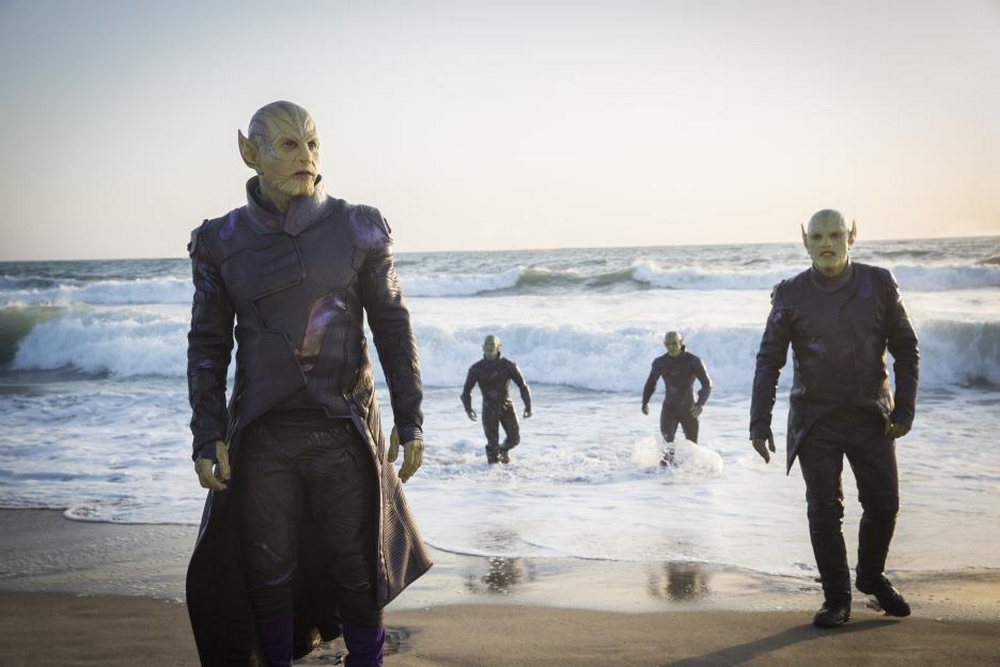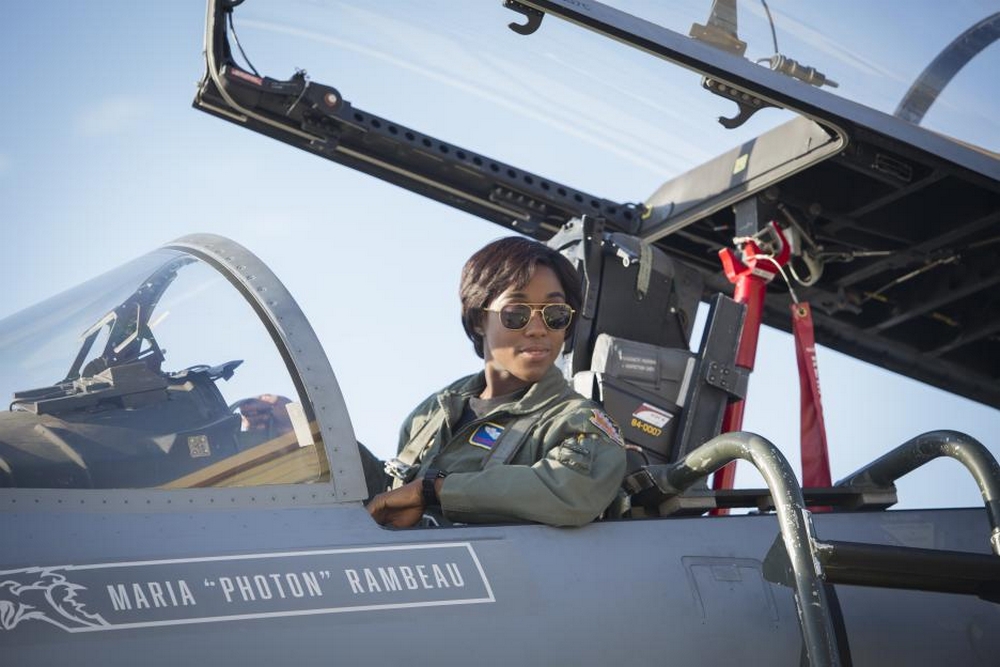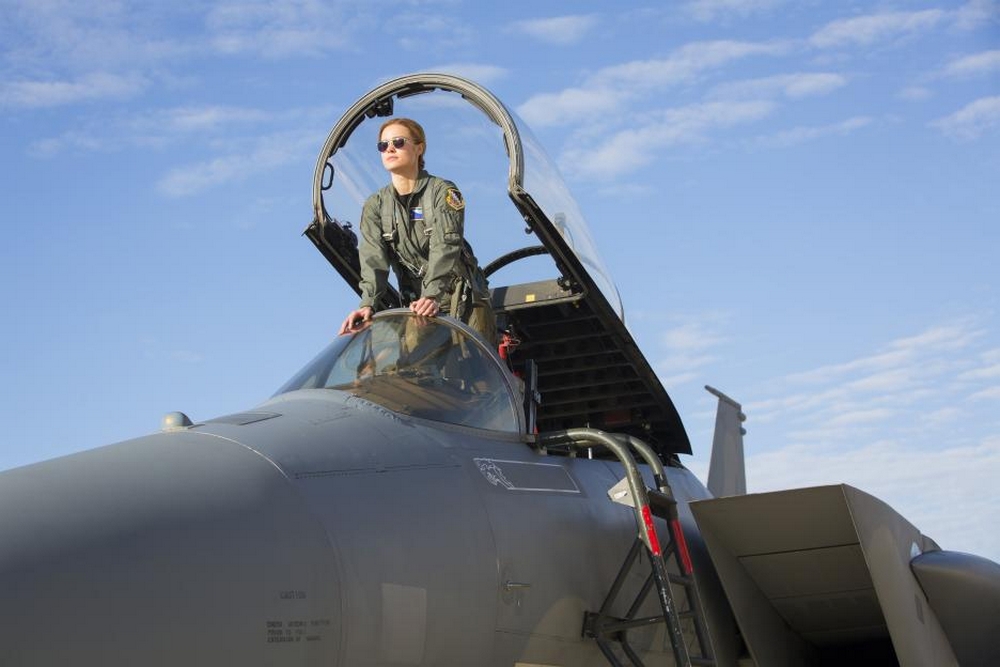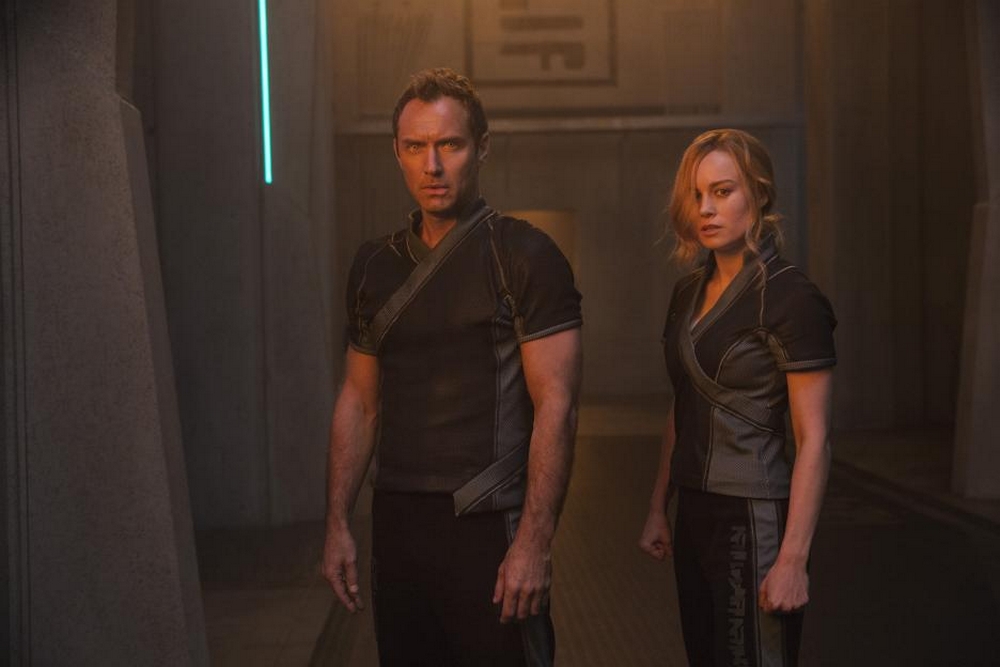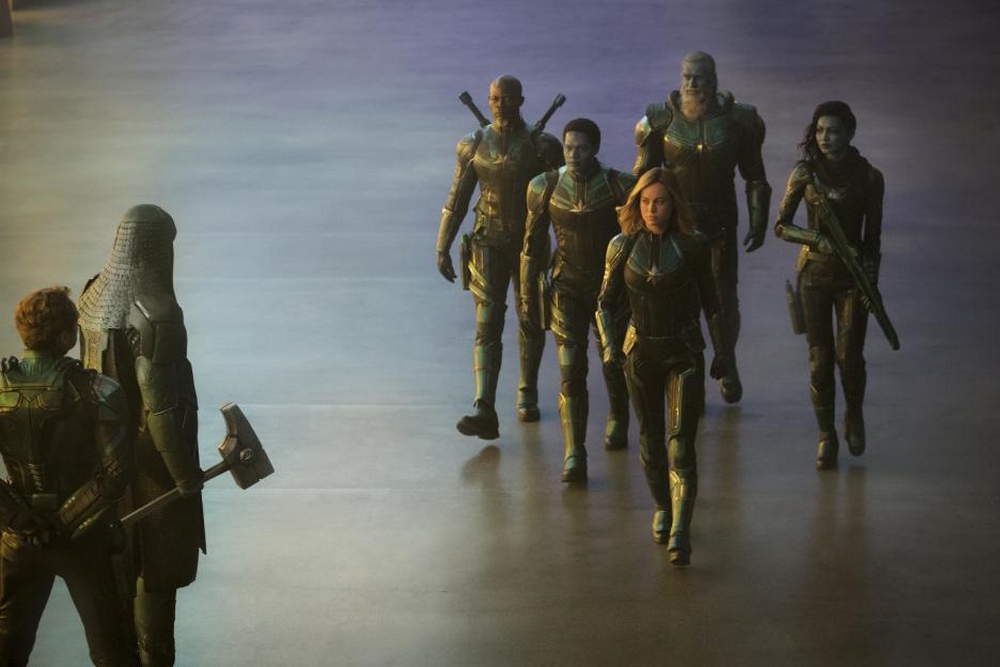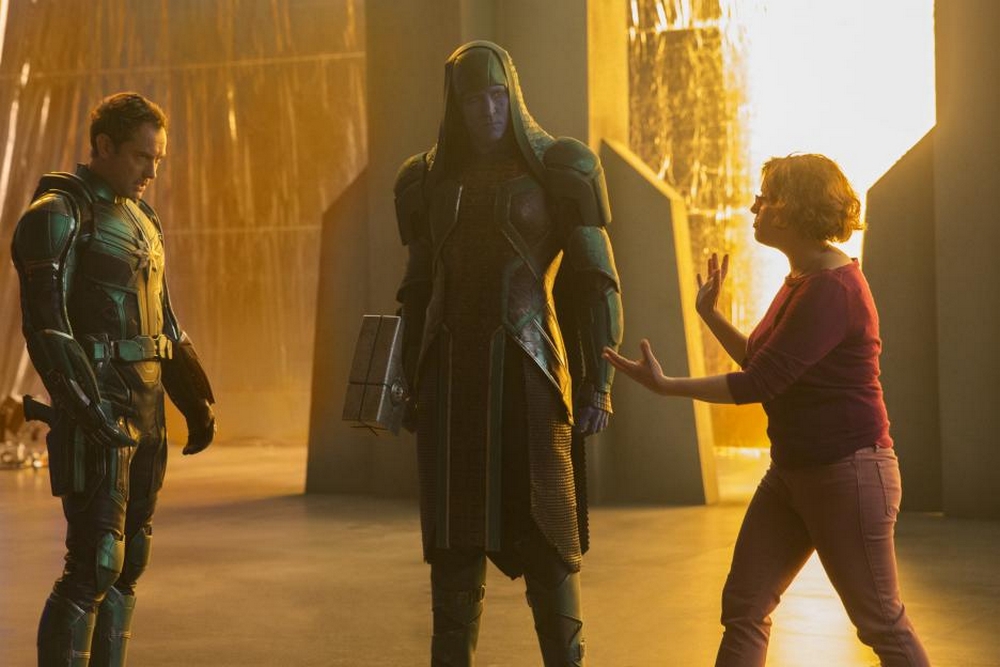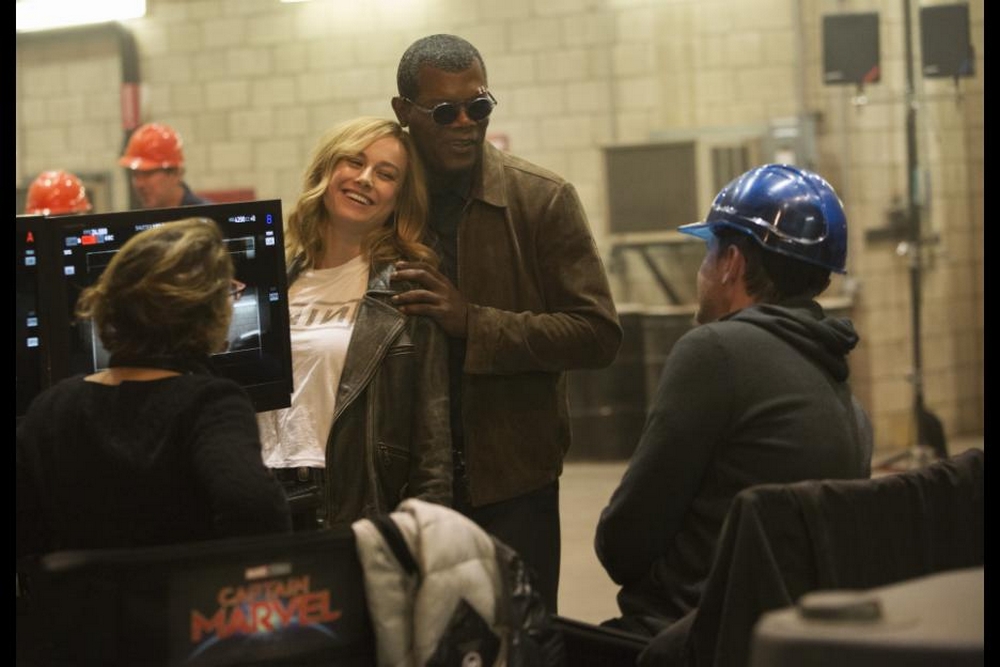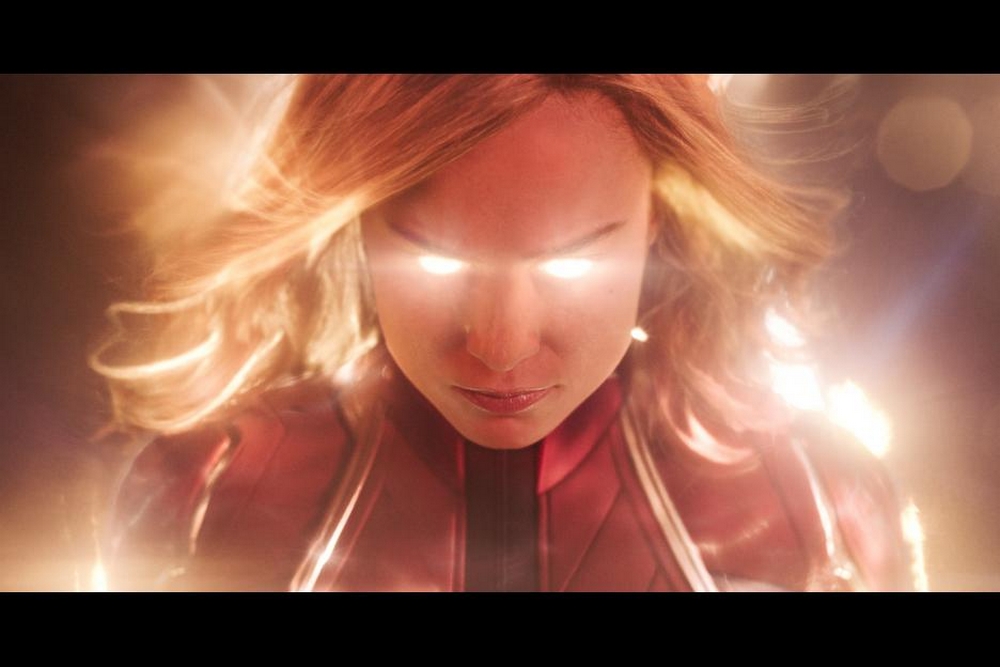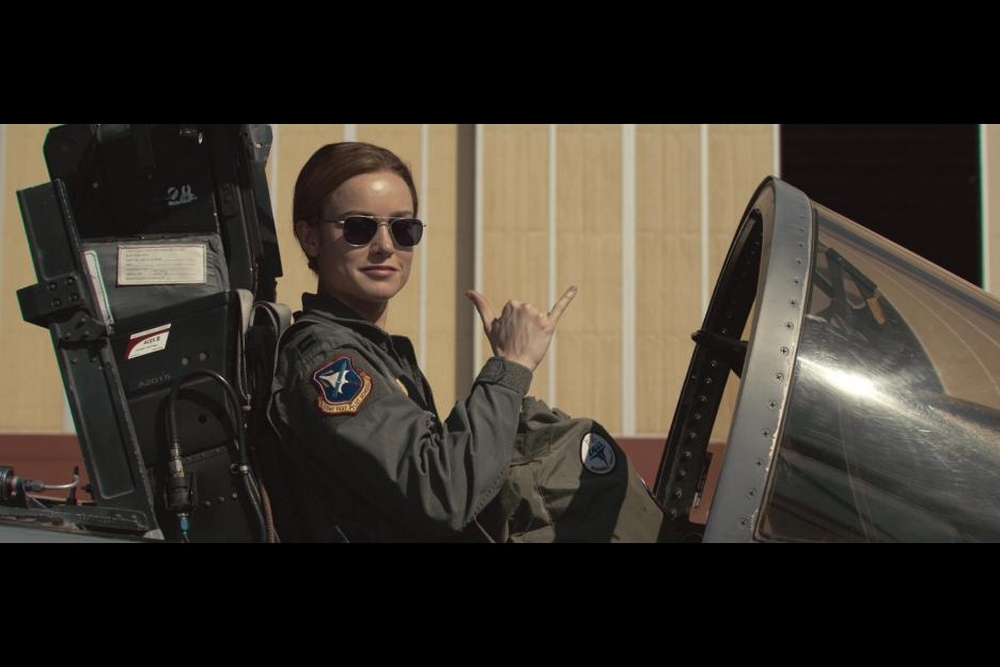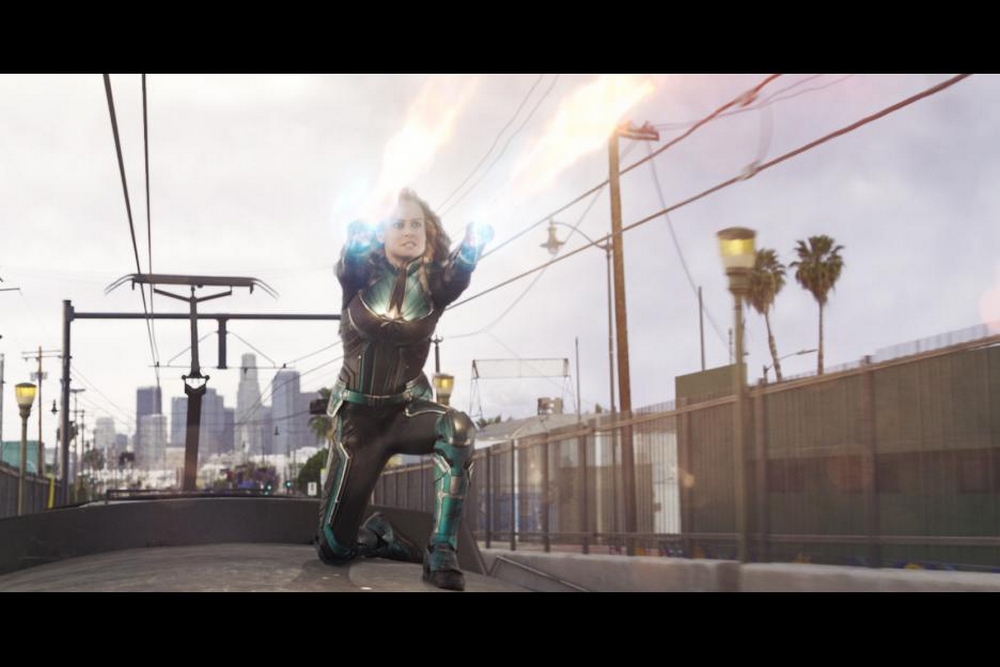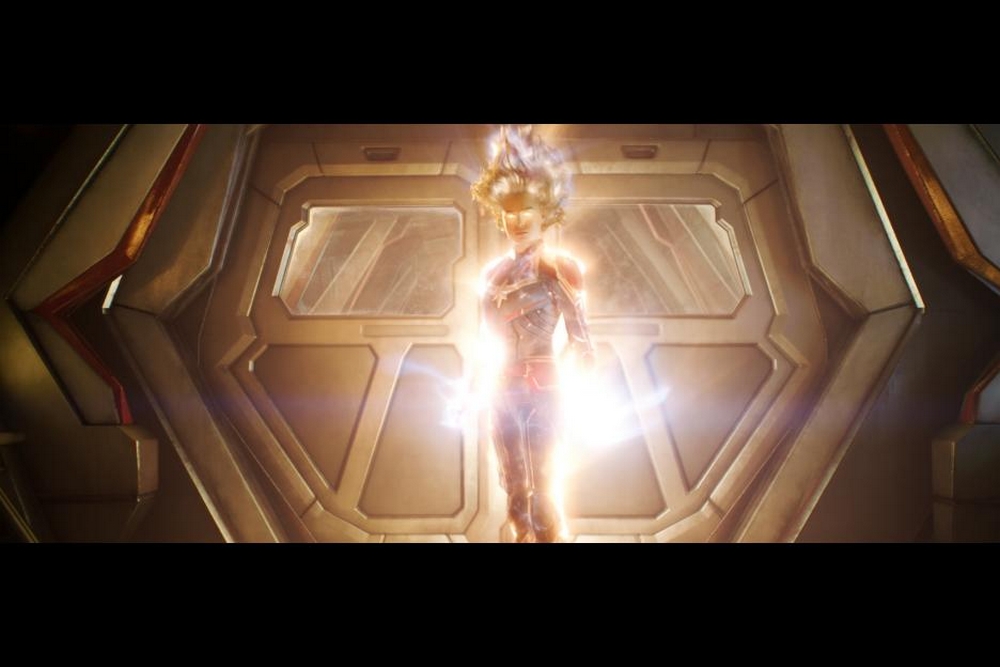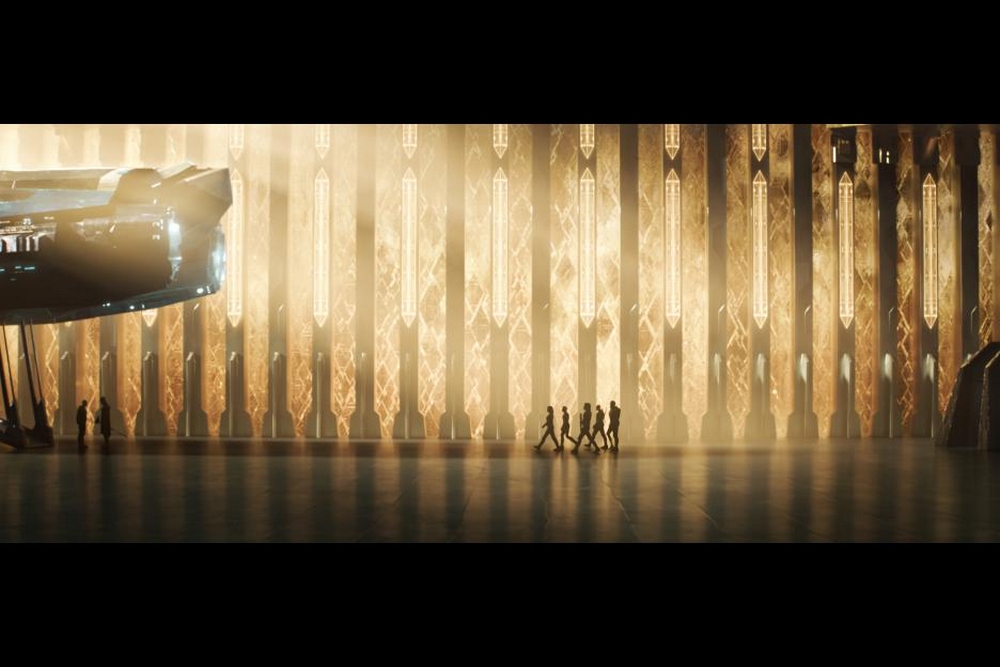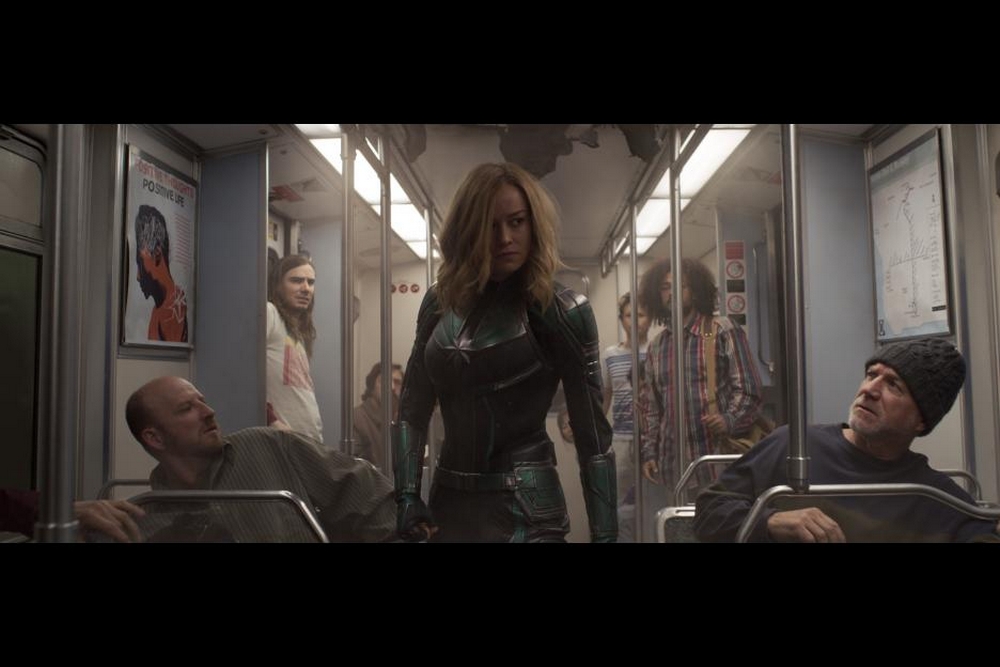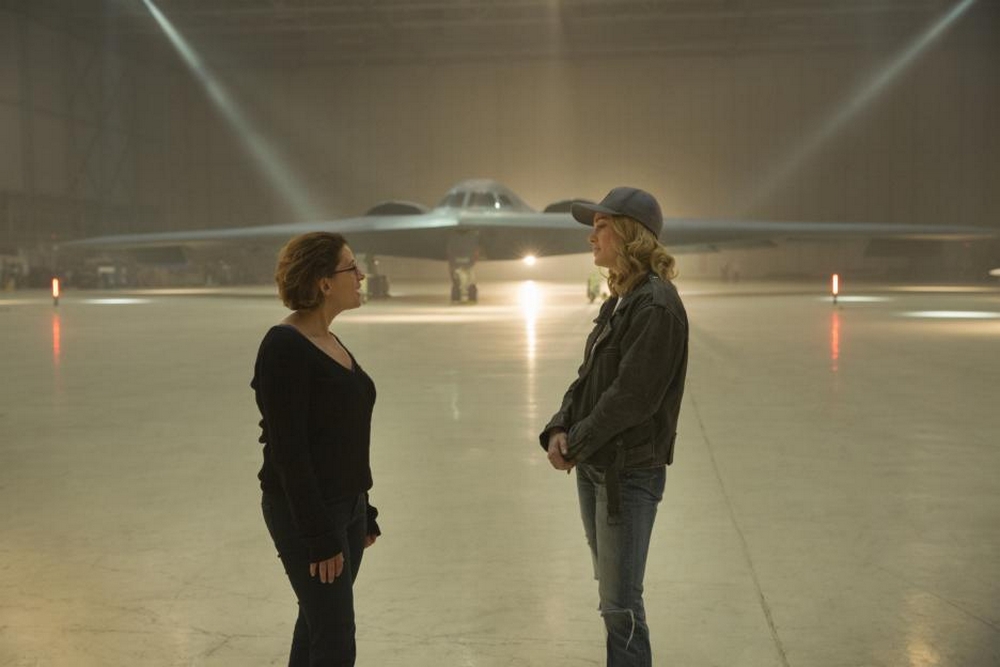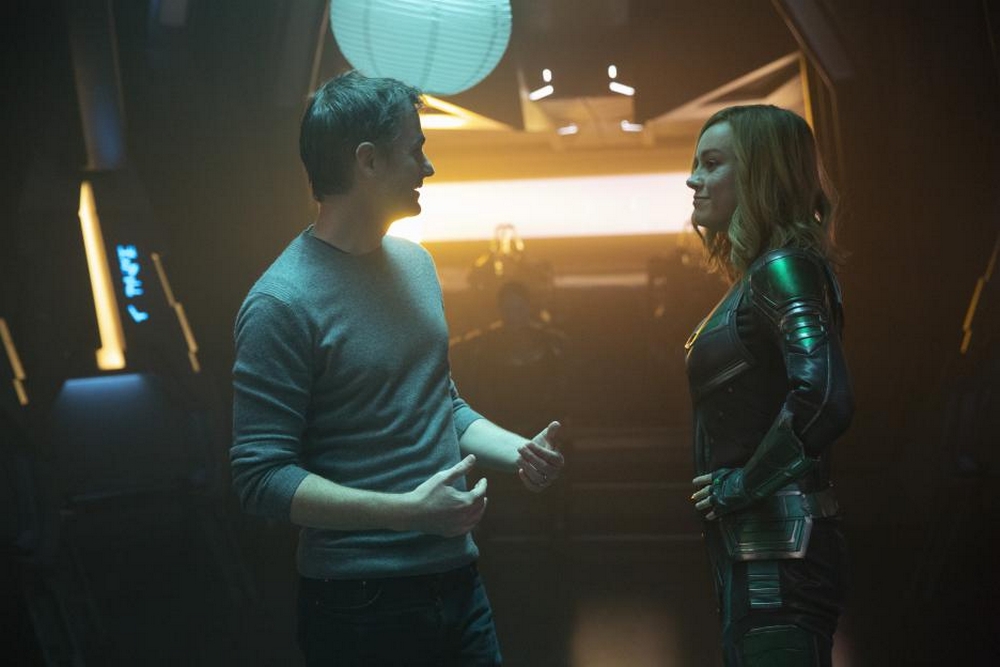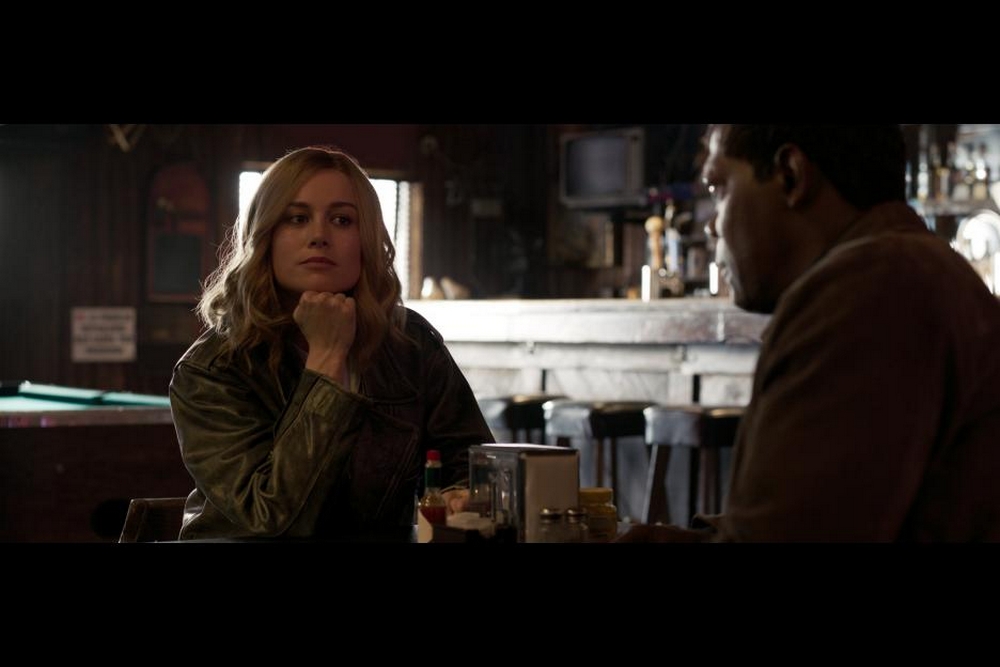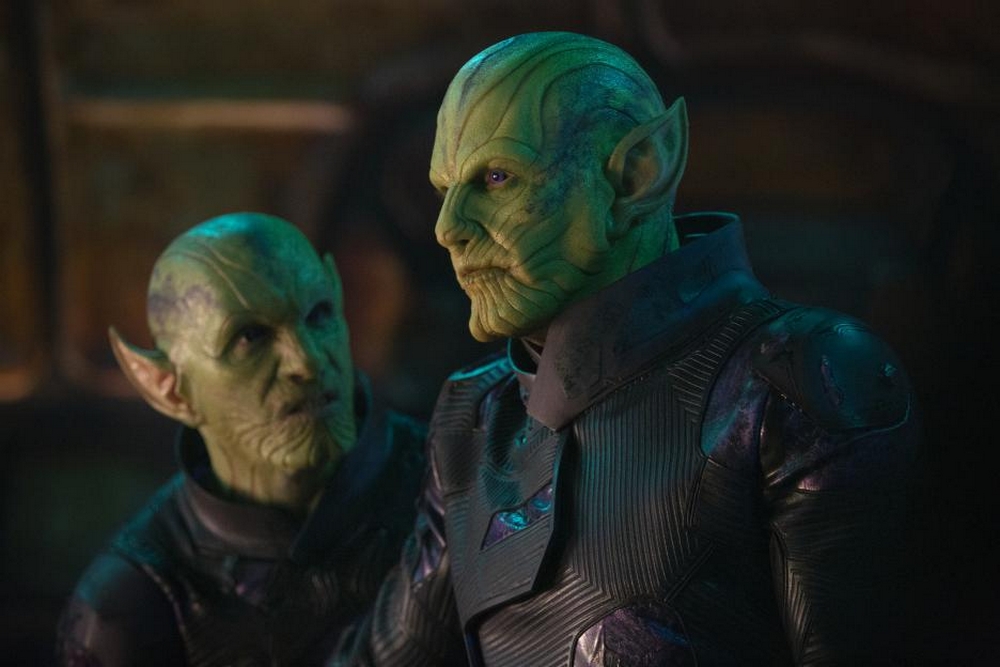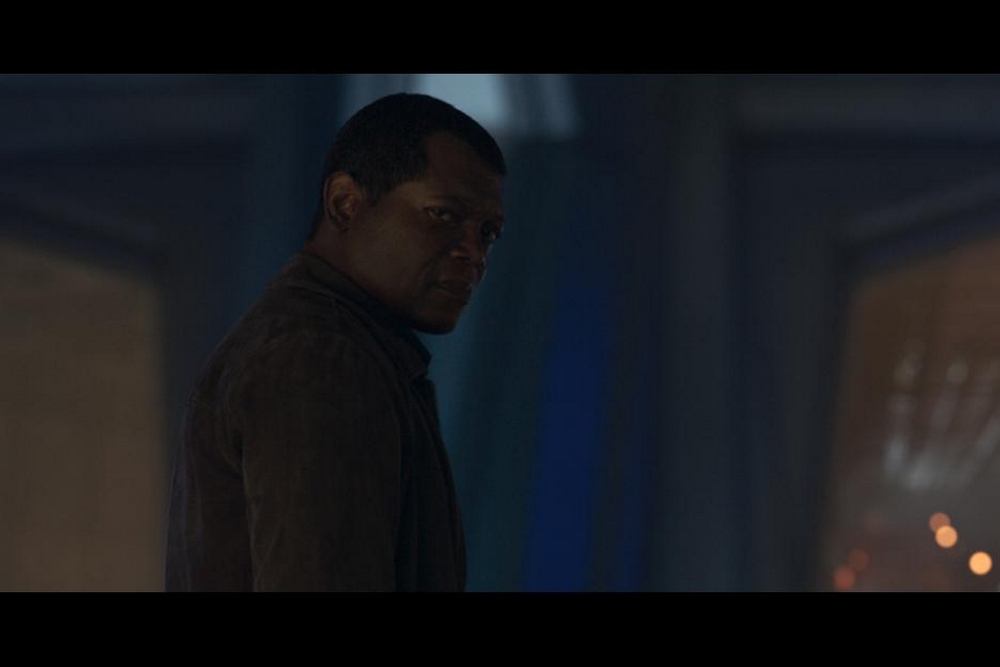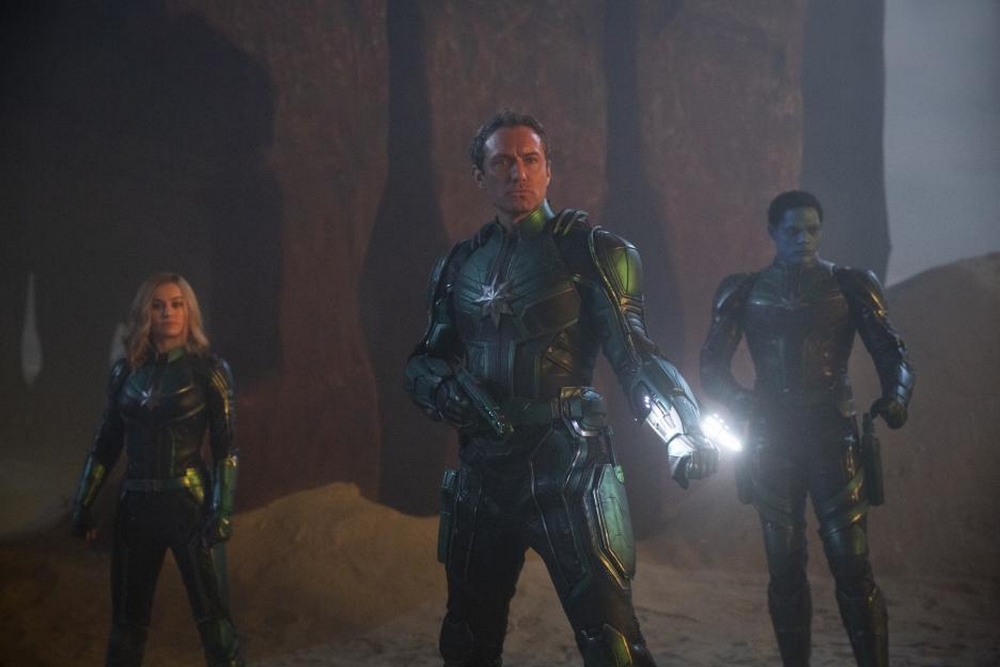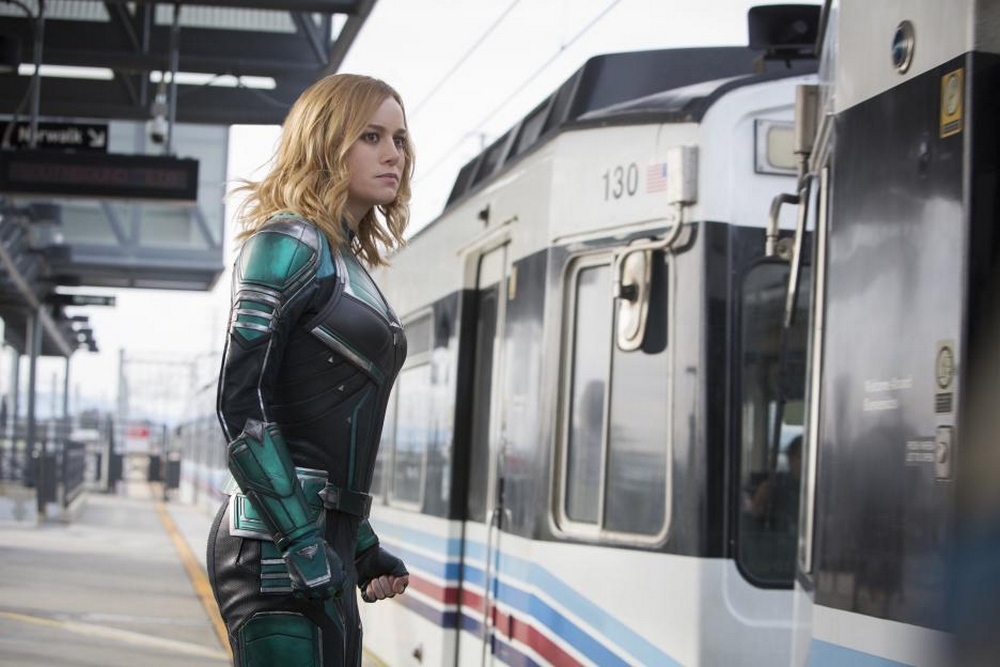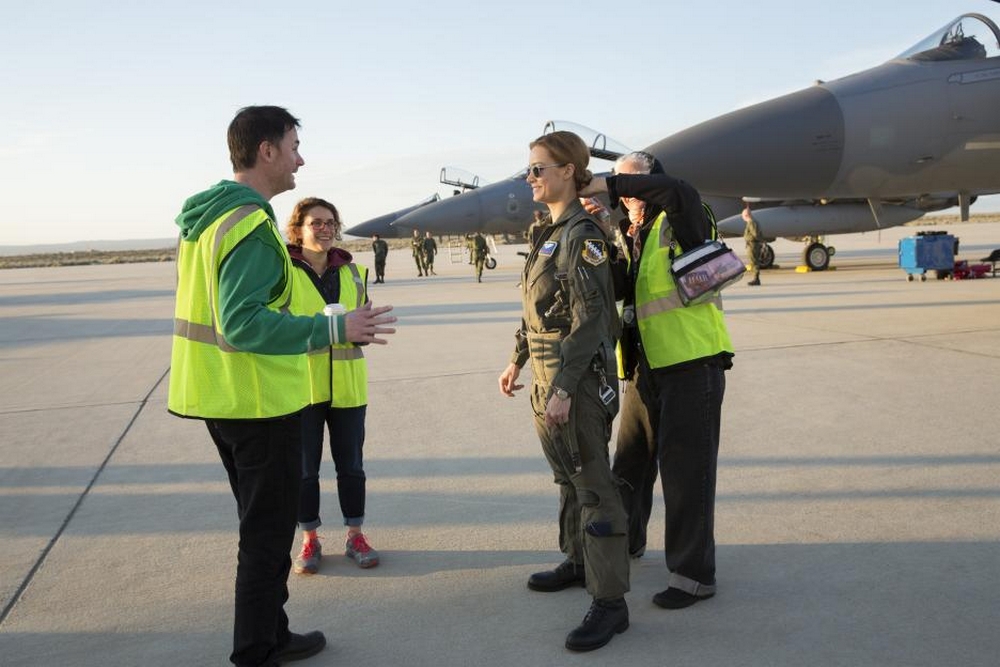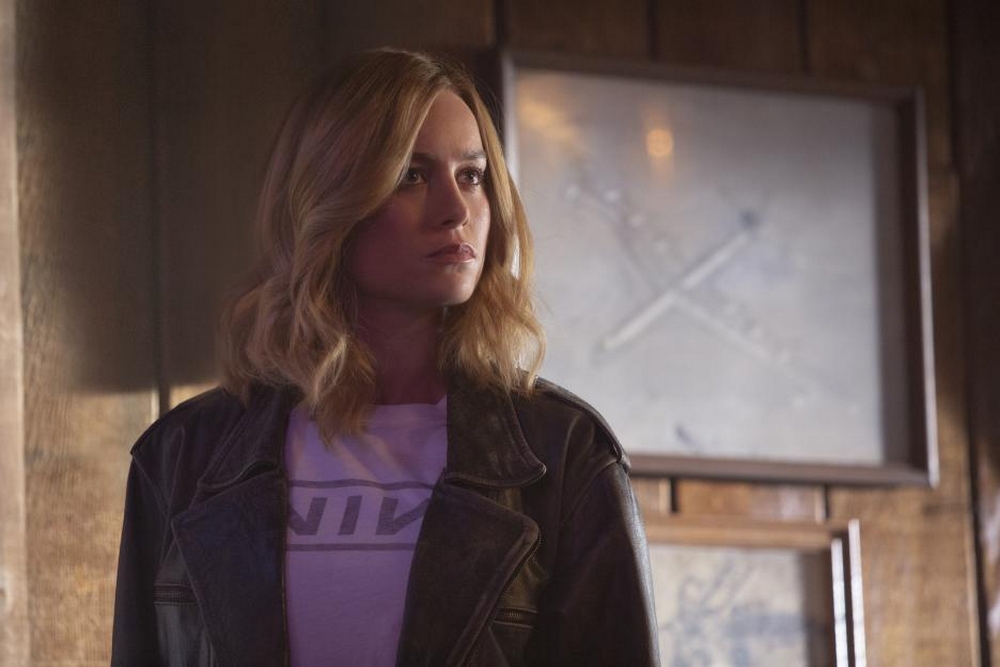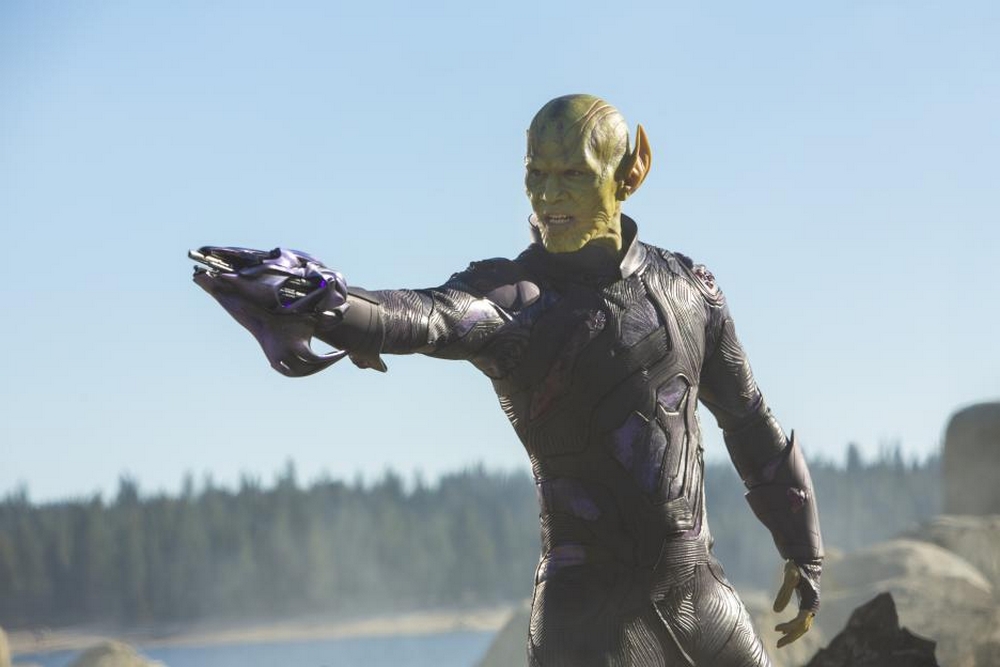For the first time, a female superhero takes center stage in the Marvel Cinematic Universe with the arrival of Captain Marvel, directed by Anna Boden and Ryan Fleck. The origin tale recalls how U.S. Air Force fighter pilot Carol Danvers (Brie Larson) gains her otherworldly powers and becomes entangled in a galactic war between the Kree and Skrulls. Critical to the storytelling are 2,200 visual effects shots produced by 14 vendors, including Industrial Light & Magic, Framestore, Digital Domain, Animal Logic and Scanline VFX, overseen by Marvel Studios vfx supervisor Christopher Townsend (Captain America: The First Avenger).
Like Jon Watts (Spider-Man: Homecoming), Peyton Reed (Ant-Man) and Taika Waititi (Thor: Ragnarok), Boden and Fleck are indie filmmakers making their blockbuster debut for Marvel Studios after helming Half Nelson, Sugar and Mississippi Grind. “Anna and Ryan are used to a naturalistic way of working,” notes Townsend, who gave a Visual Effects 101 course to the directorial duo. “It’s all about character and character arcs. When we first met, I walked them through the visual effects process. I showed Anna and Ryan everything from bluescreen, greenscreen, composites, all the way through to creating digital characters. Anna and Ryan are both incredibly smart, took to it quickly, and understood what they could ask for.”
She’s Got the Power
Captain Marvel is capable of energy projection and absorption, flight, as well as superhuman strength, speed, endurance and stamina. “Her powers are somewhat established in the comic books, and our job was to try to interpret and bring that to the screen,” explains Townsend. “There were lots of conversations about her transformation from Carol Danvers to Captain Marvel. What is that and what are those powers? We wanted to figure out a way of showing those powers in a photorealistic manner and never have the audience being taken out of the character arc.”
When depicting the energy projection of the protagonist, a conscious decision was made to avoid replicating the Extremis effect where a massive energy build-up within the human body turns it into a devastating bomb. “There are moments where her fists glow early on in the power cycle. One of the often critiques was, ‘Too Extremis.’ We wanted to find a different visual signature. Having this leaking energy coming off of her body was the approach that we finally took.”
Remade in the ’90s
As the story is set in 1995 when Nick Fury and Phillip Coulson were early in their careers at S.H.I.E.L.D., digital de-aging was required for actors Samuel L. Jackson and Clark Gregg. “Combined, they’re in about 500 [shots], with Sam being in the vast majority of those shots,” reveals Townsend. “It was important to find a naturalistic way of creating Sam Jackson as audiences remember him from the mid-1990s.” Jackson was the sole point of reference for Lola VFX, as utilizing an appropriately aged body double and 2D skin grafting was too time prohibited. “That’s a testament to how young Sam Jackson looks. Clark Gregg was the same. It was a matter of smoothing and refining his features.”
Technology also needed to reflect the time period. “We’ve got the forerunner to the Quinjet (that first appeared in The Avengers); it’s an ugly duckling of a ship painted in traditional prototype colors, which is white and red. Communication devices are based on what futuristic things have looked like in 1995. There are lots of nods to the 1990s in there.”
Principal photography was conducted in Los Angeles, Baton Rouge and New Orleans from March 19, 2018 to July 6, 2018. “We had to remove certain buildings and change various advertising and signage in downtown Los Angeles,” remarks Townsend. “We did a lot of road closures and were able to put real 1995 period cars in place for the most part. But there is a lot of work we’ve done extending things in the deep background. We’ve got a whole train chase on a Metro car. There were specific designs the directors wanted for the storytelling that the real trains didn’t allow us to do, so we had to practically build sets and digitally manipulate them.”
“Then, on the various other alien planets — we’ve shot one particular scene out in a quarry north of Los Angeles that was fogged up for a couple of weeks and nights.” Townsend continues. “For my last movie, Guardians of the Galaxy Vol. 2, we did a lot of world building and had to make sure that things looked different. One of the most interesting things about working on these films is trying to create unique things but still have them fit within the Marvel Cinematic Universe.”
A Transformative Experience
Shape-shifting Skrulls serve as the antagonists to Captain Marvel. “We looked at classic films, like American Werewolf in London, where you see these transformations, presented lots of ideas to the directors, and came up with a recipe,” explains Townsend.
“We need it to be a strong physiological transformation. We asked the question: Is it painful and difficult? There were lots of discussions both with the directors and actors. Ben Mendelsohn portrays the leader of the Skrulls, Talos, and he came up with his own ideas of how these beings could transform. We looked at the comic books and the prosthetics created for the characters. They’ve got these large grooves in their skin and faces so we used all of those features to get something special that feels physical and real-world. There’s a body effectively inside that is then able to rip out through the skin and transform.”
The Skrulls’ clothing comes on via nanotechnology: “We looked at Avengers: Infinity War, Black Panther and Guardians, and came up with something with a similar feel.”
A constant feline companion of Carol Danvers is nicknamed Goose in honor of the fighter pilot played by Anthony Edwards in Top Gun. “In many ways the cat was one of the hardest things that we had to do,” reveals Townsend. “Someone early on pointed out, ‘If you shoot a cat sitting or standing up multiple times it is not going to do the same thing.’ We had four different real cats: Reggie, Archie, Rizzo and Gonzo. We had to do a CG version for certain moments when Goose does non-cat-like things. Reggie was wetted down (which he didn’t like at all), photographed and scanned.”
Trixter was responsible for the digital double that the directors could not point out when doing a side by side comparison. “Cutting from real to CG cat proved incredibly difficult. Reggie had lost some weight and the three other ginger tabbies had different shaped heads, faces and eyes.” Townsend adds, “It’s interesting to be working on a film that is fundamentally not a visual effects movie but has an awful lot of visual effects in it. The challenge is to always make sure that the audience never gets take out of the movie. What the cat becomes is a fun several beats which I’m looking forward to the audience seeing.”
Captain Marvel is in theaters now. The film posted the best opening weekend in the U.S. of 2019, scoring $153 million at the box office. It is expected by industry watchers to surpass $1 billion worldwide.







